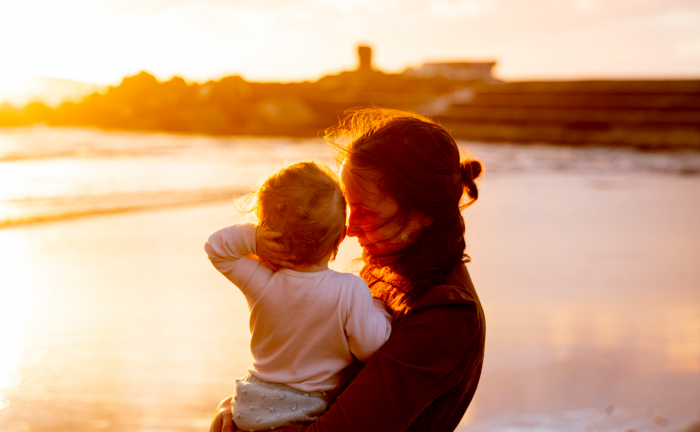The archetypal mother is the energy that holds, nurtures, nourishes, and sustains us through life and death.
She is the mother’s milk that we seek for nourishment, pleasure, soothing, safety, compassion, celebration, wisdom, and guidance throughout our lives.
This archetypal energy is ultimately the expression of planet Earth—all her life forms—including us.
She is one archetypal expression of the non-dual, and lives inside each and every single one of us. She beats our hearts, breathes our breaths, moves our bodies, and yearns to teach us how to better mother ourselves and each other as well.
We typically come to know the archetypal mother through our own mothers: her body, breath, womb, emotions, nourishment, nurturing, and way of living her own life. She is also the womb of the environment in which we develop. This energy constellates our nervous systems and consciousness in a way that shapes our relationship with all of life.
However, we also come to know the archetypal mother through our cultural mother, the mother within our collective unconscious (of which we are not separate but interdependent), and also through any relationship we cultivate with the energy of the divine mother herself.
The mother’s function in our culture is ailing; she is not supported, even though we rely on her most deeply every single day of our lives. Mothers do not have enough support, and the cultural climate is generally not one that tends toward the sustaining of all of life, but toward the shadow archetypes of the mother: the negative mother, terrible mother; and at times, as Marion Woodman describes, the death mother who seeks to oppress the creative soul life.
When we carry this wound of the mother, we feel disconnected and separate from healthier expressions of the mother archetype: one that is ultimately as fulfilled and nourished as she is sustaining and nourishing. We feel separate from love.
When this is internalized and goes into the subconscious terrains, we don’t realize that much of the way we are taught to treat ourselves is through negative mothering. We end up relating to the parts of us in pain that were not loved the way we experienced this expression of the archetypal mother in the world around us.
Love itself becomes confusing—something we long for and also fear.
It’s not to be trusted because of the pain it causes. It creates deep conflict within us and in our relationships. The pain from a lack of love has created a felt sense of deeper separation, grief, and fear of not belonging. It’s not an illusion to transcend, but a deep reality of our human condition to tend to.
It’s painful to long for things we are afraid of. To not trust what is instinctual to our nervous systems. To be afraid to reach for comfort and pleasure because of the pain that may come next. We need this comfort and pleasure—this life force energy from itself, this Eros—in order to heal and stabilize in the fluidity of our lives.
It’s a deep place we get stuck, where we relegate the parts of us in pain into a cave in our psyche, like Medusa, and punish her. We view our pain as wrong because of the way we treat the mother principle.
We seek to get rid of the pain at the expense of outcasting the one in pain within us, and that one in pain is trying to make itself known so we can finally love the one in pain—not the pain itself—to relieve our own suffering and bring balance back to the divine, collective, cultural, and personal energies of the mother.
These spaces that long for mothering and all the expressions of mother in the world, including our mothers and our inner mothers, are hungry for devotional respect. We can cultivate art if we shift our perspective on how we relate to our pain and access the energy of the loving archetypal mother to restore ourselves to sanity, wholeness, goodness, and kindness.
This mother wound is so common, but it’s not normal.
It often comes up when we are in deep grief because we don’t collectively know what to do with this kind of pain: how to bring loving-kindness toward it, how to bring pleasure—or at least connection to nurturing and nourishment—into the mix of our grief. We can channel our love into creating, expressing, moving, dancing, and praying in a way that ripples out through our entire lives and we begin to care again about what is around us.
How does the love that is your grief want to be prayed into your life today?
To the Mother in us all: More love, not less.









Read 0 comments and reply